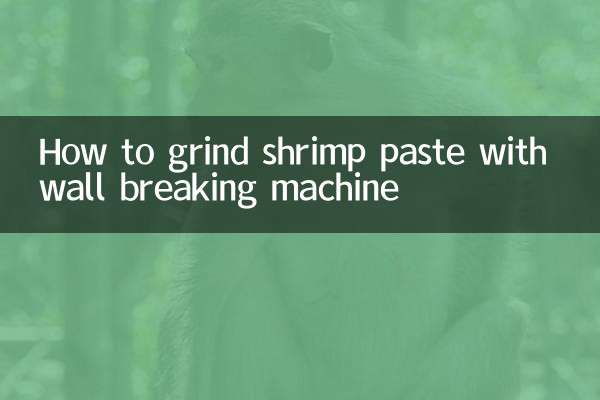How to scrub stainless steel pot
Stainless steel pots are a must-have in the kitchen because of their durability, beauty and good thermal conductivity, but they tend to accumulate grease and scorch marks after long-term use. How to clean stainless steel pots efficiently without scratching the surface? The following is a summary of the cleaning methods and techniques that have been hotly discussed on the Internet in the past 10 days. It combines scientific principles and practical experience to help you solve problems easily.
1. Common stain types and cleaning difficulties in stainless steel pots

| stain type | Causes | Difficulties in cleaning |
|---|---|---|
| Grease | Residues from long-term high-temperature cooking | Strong adhesion, difficult to dissolve with ordinary detergents |
| scorch marks | Burnt or dry-burned food | The carbonized layer is hard and can easily scratch the pot surface. |
| scale | Hard water mineral deposits | White spots affect appearance |
2. Comparison of popular cleaning methods across the Internet
According to social media and e-commerce platform data in the past 10 days, the following methods are frequently recommended:
| method | Operation steps | Applicable scenarios | Effect rating (1-5★) |
|---|---|---|---|
| Baking soda + white vinegar | 1. Add water to the bottom of the pot and bring to a boil 2. Add baking soda and vinegar and soak for 20 minutes 3. Wipe with soft cloth | Mild oil or scale | ★★★★ |
| Citric acid boiling method | 1. Boil water + lemon slices for 10 minutes 2. Scrub after cooling | Stubborn scale or odor | ★★★★★ |
| Special stainless steel cleaning paste | 1. Apply the paste to the stained area 2. Let it sit for 5 minutes and then wipe | Severe scorch marks | ★★★☆ |
3. Step-by-step deep cleaning guide
Step 1: Preprocessing
First rinse the pot body with warm water to remove loose residue on the surface to prevent particles from scratching the pot surface when scraping.
Step 2: Choose a Cleaner
Choose the corresponding method according to the type of stain (refer to the table above). It is recommended to give priority to natural materials (such as citric acid) to reduce chemical residues.
Step 3: Physical Wiping Techniques
•Tool selection:Use a sponge or microfiber cloth and avoid steel wool.
•Directional control:Wipe in one direction along the stainless steel texture to avoid scratches caused by circular friction.
Step 4: Maintenance recommendations
Wipe dry after cleaning, and regularly coat the pot with cooking oil to form a protective film to delay oxidation.
4. Common misunderstandings and refuting rumors
| Misunderstanding | scientific explanation |
|---|---|
| "The brighter the stainless steel pot, the cleaner it will be" | Excessive polishing will destroy the protective layer of chromium oxide and accelerate corrosion. |
| "All stainless steel pots are dishwasher safe" | Some low-quality pots are easily deformed after being washed at high temperatures |
Through the above methods, you can not only clean the stainless steel pot efficiently, but also extend its service life. It is recommended to choose a combination plan based on the actual situation. For example, stubborn scorch marks can be softened with baking soda first, and then treated with a special cleaning paste.

check the details

check the details